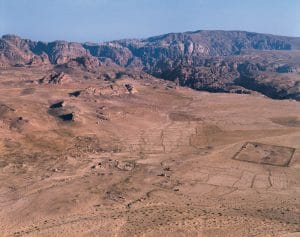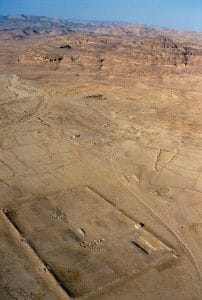
Seger Grant Report: The Trajanic Fort at Humayma
With the assistance of the Joe D. Seger Grant several hundred pottery profiles and drawings were prepared for vol. 3 of the Humayma Excavation Project report, concerning the Trajanic Fort. The excavation was sponsored by the University of Victoria and Queen’s University, was funded by numerous SSHRC General Research Grants and grants from various other foundations, and was assisted immeasurably by the American Center of Research in Amman.
From 1986 to 2005, I directed survey and excavation at the site of Humayma, ancient Hawara, in the Hisma Desert of Southern Jordan halfway between Petra and Aqaba. The site flourished from the first century BC to the eighth century AD as a Nabataean, then Roman, Byzantine, and Early Islamic site. Each culture left its mark: a sophisticated Nabataean water supply system, Nabataean houses and temples, a Roman auxiliary fort, bath, and associated civilian settlement, five Byzantine churches and many houses, and the palace of the Abbasid family and associated mosques. My team surveyed and sampled or excavated all these structures. In 2005 I turned over the archaeological permit for the site to my collaborator, Dr. M. Barbara Reeves, a professor at Queen’s University, who has continued fieldwork. We have published many preliminary reports on the excavation in the form of articles, chapters, and conference papers, along with two final report volumes: Resources, History, and the Water-Supply System (ASOR 2010), and Nabataean Campground and Necropolis, Byzantine Churches, and Early Islamic Domestic Structures (ASOR 2013).
The fort at Humayma is particularly important as the best preserved — and one of the very few — early principate period forts in the Near East. The fort was founded soon after Trajan’s conquest of the Nabataean kingdom in AD 106 to house a detachment of around 500 troops. Our excavations documented the fortification walls with 24 projecting towers and the location and plans of the main interior structures: the principia (headquarters building), praetorium (commander’s residence), horreum (granary), barracks, a brewery and craft areas, latrine, and water distribution system. The fort and internal structures were laid out in carefully chosen multiples of the Roman foot (0.296 m). My research will present the most complete documentation yet of the modular planning of an entire fort complex by Roman military engineers, and its pioneering use of projecting towers.
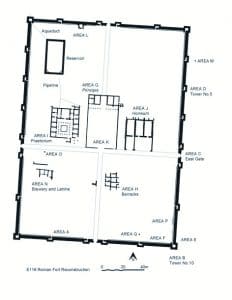
Reconstructed plan of the Trajanic fort (Chris Mundigler)
The ceramics from the fort, for the most part manufactured in Petra and Aqaba, show an interesting mix of fine wares, storage wares, and kitchen wares. The remains of several cheese curd strainers indicate the preparation of sheep or goat cheese in the fort.
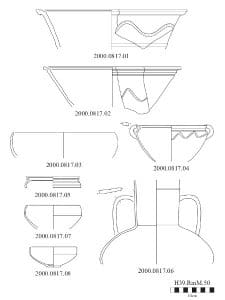
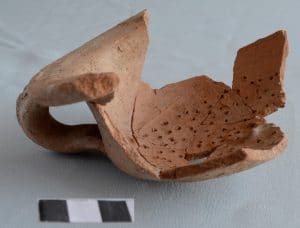
-John P. Oleson, University of Victoria
American Society of Overseas Research
The James F. Strange Center
209 Commerce Street
Alexandria, VA 22314
E-mail: info@asor.org
© 2023 ASOR
All rights reserved.
Images licensed under a Creative Commons Attribution-NonCommercial-ShareAlike 4.0 International License
COVID-19 Update: Please consider making payments or gifts on our secure Online Portal. Please e-mail info@asor.org if you have questions or need help.
